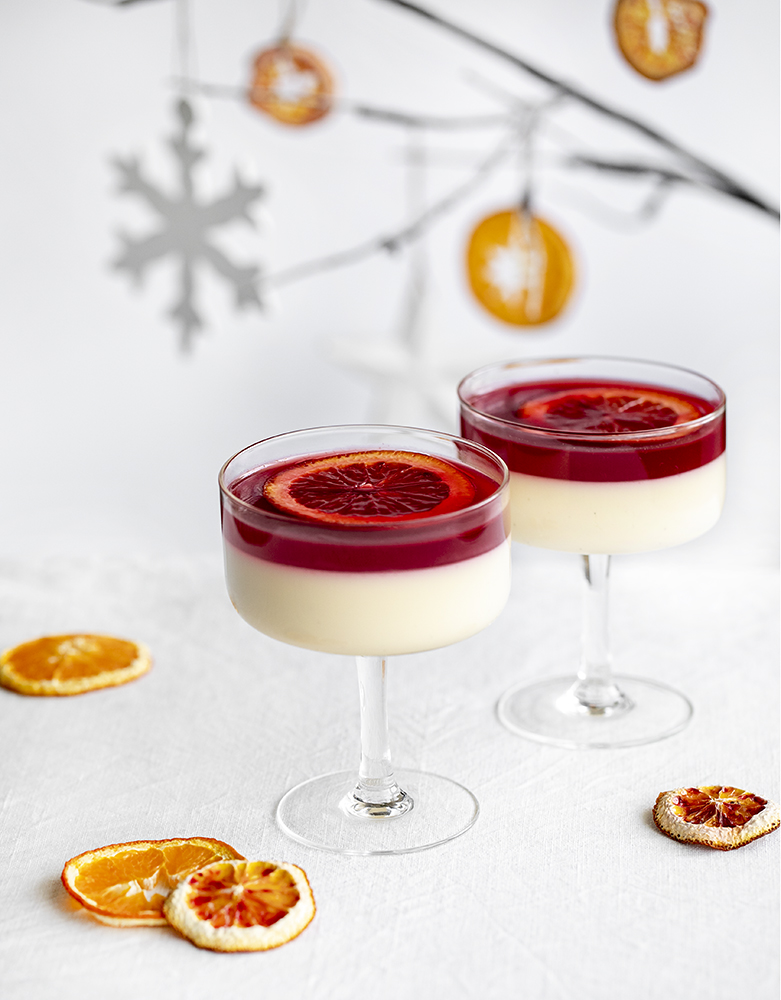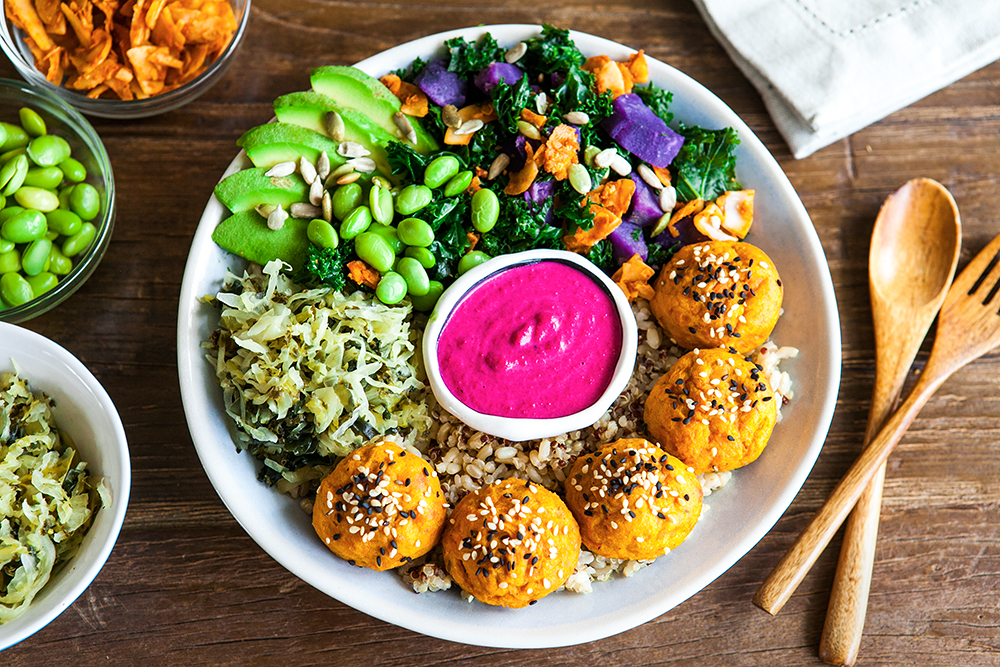
This Macrobiotic Bowl just looks and taste delish. It offers a fusion taste of Western and Japanese food well-combined together. Golden crispy sweet potato sesame balls, vibrant kale and smoked coconut bacon salad, brown rice and quinoa mix, crunchy wakame Super Super Kraut that tastes like the ocean, creamy avocado, fresh green edamame and savory beetroot tahini sauce. I call this Heaven on Earth!
Macrobiotic dietology is nutritional science, which originated in the late 19th century in Japan. The idea of macrobiotics is that all the products are divided into yin and yang, acid and alkaline, and our goal is to strike a balance between them, it is in the secret balance of health and longevity, and it’s not just food.
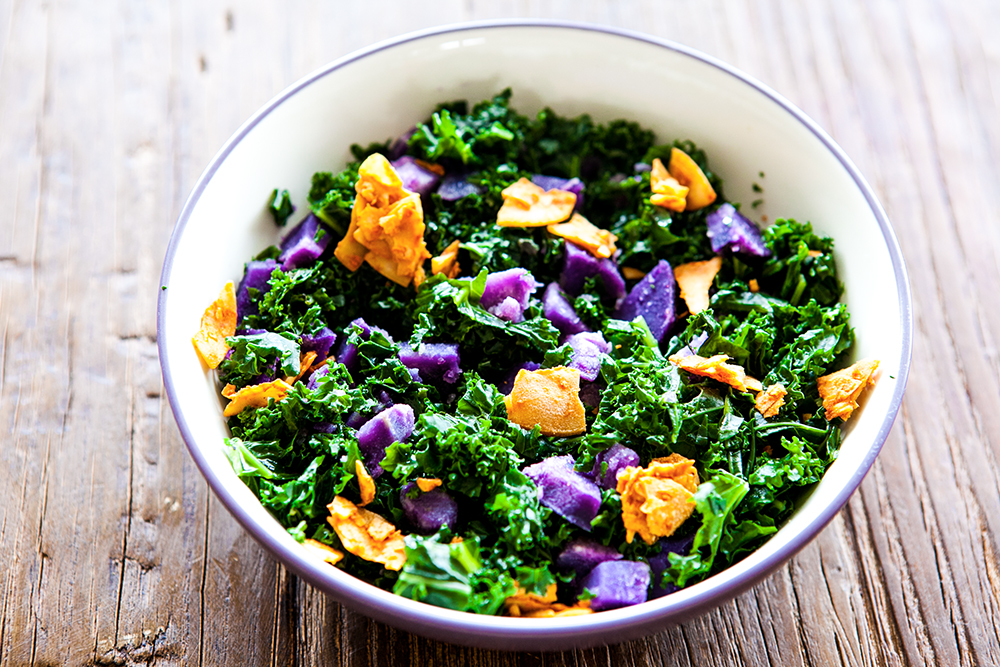

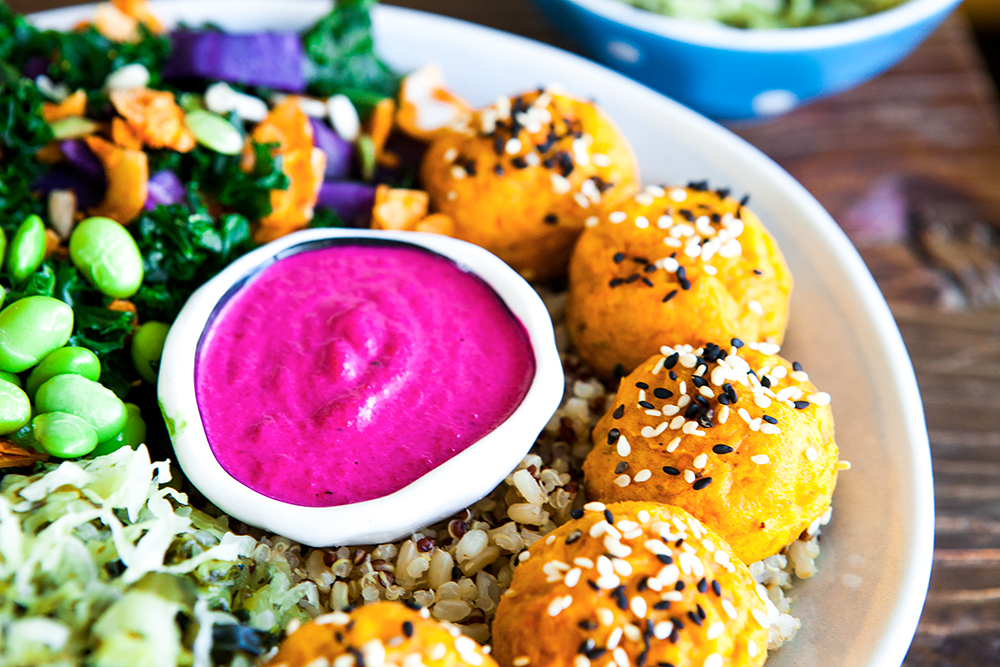
Macrobiotics isn’t actually a diet; it’s more of a philosophy that places emphasis on proper dietary practice in daily life. But if you want to get healthier – and lose weight – it’s certainly worth experimenting with, especially if you have a taste for Japanese food or other Asian cuisines.
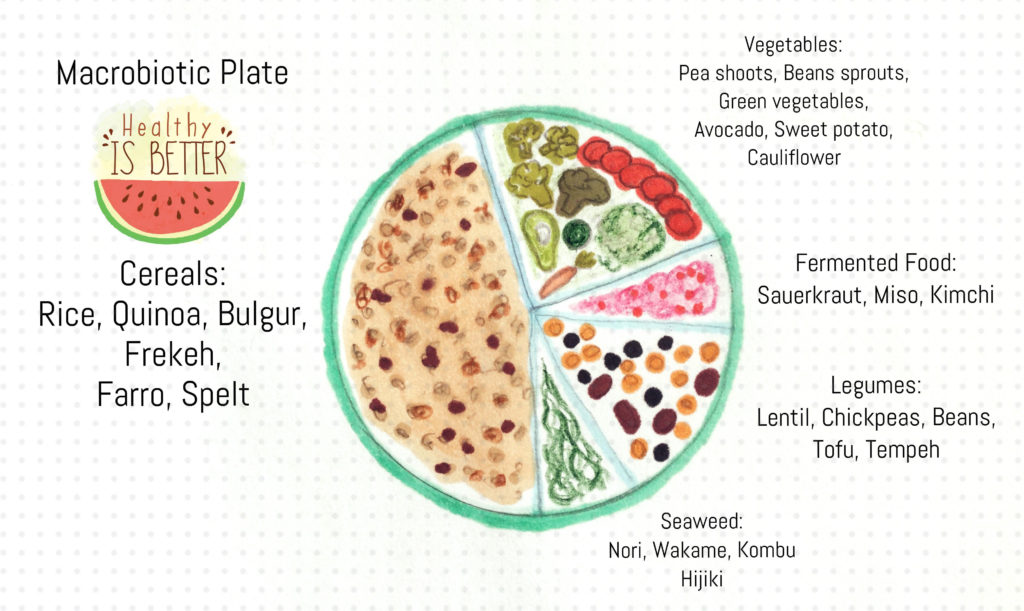 Macrobiotic food diet typically consists of 40-60% of cereals. May be different depending on gender. The cereals which are best suited for this is brown rice, quinoa, millet and different variants of wheat (farro, spelt, freekeh and bulgur). Another 25-30% is a part of vegetables. You can use green vegetables, pea shoots, beans sprouts, spinach and my favorite Kale leafs. Next 5-10% we’ll reserve for legumes. This may be a lentil, chickpeas, any kind of beans, as well tofu and tempeh because they are made from soy and are rich in protein. Next 5% is my own favorite part. It consists of varieties of Japanese seaweed. Which is your favorite one? Nori, wakame, kombu or hijiki? And finally last 5-10% on your plate booked for fermented products – sauerkraut, miso paste and kimchi. Fermentation process creates beneficial enzymes, vitamins, Omega-3 fatty acids and various strains of probiotics.
Macrobiotic food diet typically consists of 40-60% of cereals. May be different depending on gender. The cereals which are best suited for this is brown rice, quinoa, millet and different variants of wheat (farro, spelt, freekeh and bulgur). Another 25-30% is a part of vegetables. You can use green vegetables, pea shoots, beans sprouts, spinach and my favorite Kale leafs. Next 5-10% we’ll reserve for legumes. This may be a lentil, chickpeas, any kind of beans, as well tofu and tempeh because they are made from soy and are rich in protein. Next 5% is my own favorite part. It consists of varieties of Japanese seaweed. Which is your favorite one? Nori, wakame, kombu or hijiki? And finally last 5-10% on your plate booked for fermented products – sauerkraut, miso paste and kimchi. Fermentation process creates beneficial enzymes, vitamins, Omega-3 fatty acids and various strains of probiotics.
Fish, seeds, nuts, spices, and fruits sweeteners can also be included, as well as any other products – macrobiotics does not prohibit anything. The main thing to keep balance.
And very easy to cook at home. It is convenient to take with you in the lunch box. This lunch is well kept, rich in carbohydrates and vitamins. Very good combination for the active lifestyle and for children.
I`m not a big fan of diets. I find it difficult to follow any one system of foods, each person is unique. But I’m always happy to get the Macro bowl (Buddha Bowl, Nourish bowl, Macrobiotic plate) for lunch because it makes my skin glowing!
Ingredients
3 ServesFor Kumara Balls, 18 Pcs
- 2 Cups steamed and mashed sweet potato or kumara
- 1/3 Tsp Garlic Powder
- 1 Tsp Turmeric powder
- Pinch of cinnamon
- 1 Tsp ground cumin seeds
- Pinch of Cayenne powder
- 1/2 Tsp Xanthan gum
- 2 Tbsp Brown rice flour
- Sea salt
- 2 Tbsp Toasted white and black sesame seeds
Xanthan gum is a bacteria-derived product, commonly used as a thickening and stabilizing agent in both food and medicine. Because of its binding properties, xanthan gum can serve as a replacement for gluten in foods designed for people who suffer from celiac disease.
For Kale and Bacon salad
- 2 Cups Steamed kale, chopped
- 1 Cup Steamed purple potato (I use Maori potato), cubed
- 1/2 Cup Coconut bacon from The Green Seed
- 1 Tbsp Extra virgin olive oil
- Sea salt
For Beetroot Tahini Sauce:
- 1 Cooked beetroot, cubed
- 1 Tbsp Tahini
- 1/4 Cup of room temperature water
- 2 Tsp Apple cider vinegar
- 1 Tsp Apple syrup (or maple syrup)
- Pinch of salt
To Serve:
- 3 Cups cooked brown rice and quinoa mix (recipe below)
- 1,5 Cups Super Super Kraut (cabbage/kale/seaweed) from Living Goodness
- 1 Cup Edamame beans, boiled or steamed
- 1 Avocado, sliced
- 3 Tbsp toasted pumpkin and sunflower seeds
Directions
- For sweet potato balls. Preheat the oven to 180C fan bake/ 350F
- Combine all ingredients except sesame seeds in the big bowl and mix well. Chill the mix in the fridge for about 30 minutes.
- Roll 18 balls using your hands. Keep your hands are damp. It helps to prevent sticking.
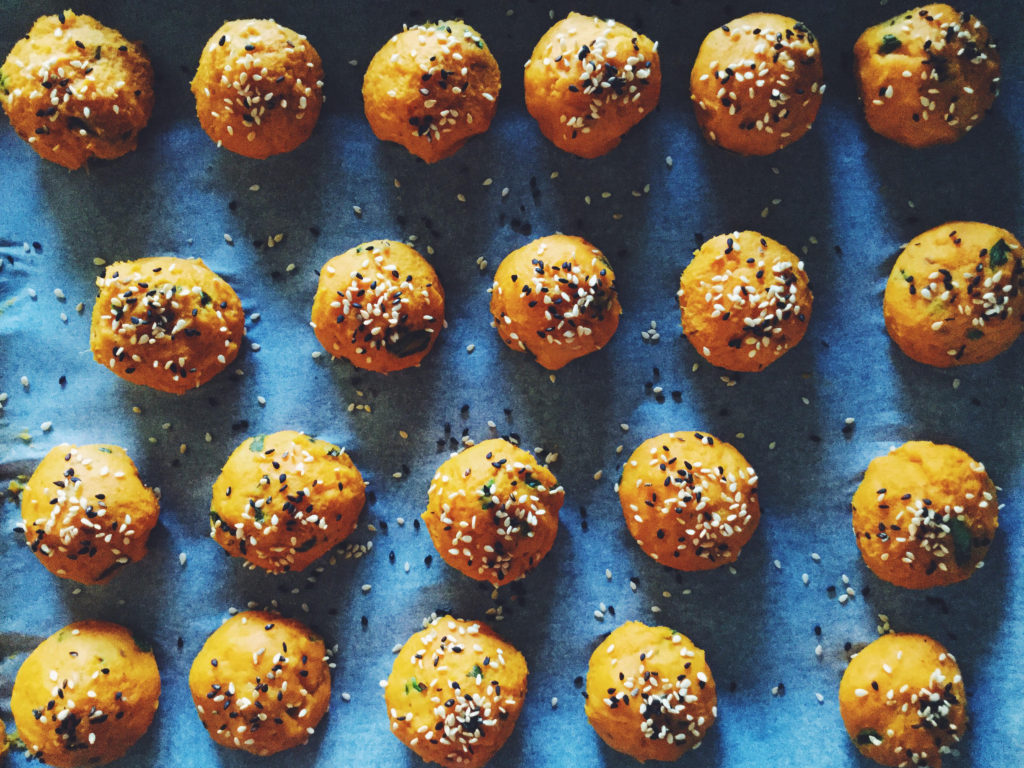 Place balls on the tray lined with baking paper. Sprinkle with sesame seeds. Bake them for 20 minutes until outside is nice and crispy.
Place balls on the tray lined with baking paper. Sprinkle with sesame seeds. Bake them for 20 minutes until outside is nice and crispy.- For kale and bacon salad. Put kale leaves into a steamer or colander set over a pan of boiling water. Cover with a lid and steam for 2-3 mins or until crisp-tender. Don`t allow to overdo kale leaves. It`s very important to keep green color and vitamins. Chop kale leaves and mix it with cubes of purple potato. Season with salt and olive oil. Sprinkle with coconut bacon.
- For sauce. Combine all ingredients in the blender and mix well until smooth. If the mixture is too thick, slowly add more water or apple cider vinegar until it reaches the preferred taste and consistency.
- To serve, place brown rice and quinoa mix in the middle of the bowl, then add sweet potato balls, kale and bacon salad, sauerkraut, edamame and avocado slices. Sprinkle with toasted seeds and drizzle with tahini sauce.
Mix it all up and dig in! Enjoy!
How to cook brown rice and quinoa:
- Place 1 Cup of long grain brown rice in a large strainer or colander and rinse it thoroughly under cool water. There is no need to dry the rice before cooking; a bit of moisture on the rice is fine.
- Rinse 1/2 Cup red and white mixed quinoa with cold water using a strainer until the water that comes through is clear.
- Place the brown rice and quinoa in a saucepan with 3,5 cups of drinking water, juice of 1/2 lemon, and 4 Tbsp of tamari. Let the mix boil two minutes, cover with lid, then let it simmer 10-15 minutes till all the water has been absorbed. Serve warm.


